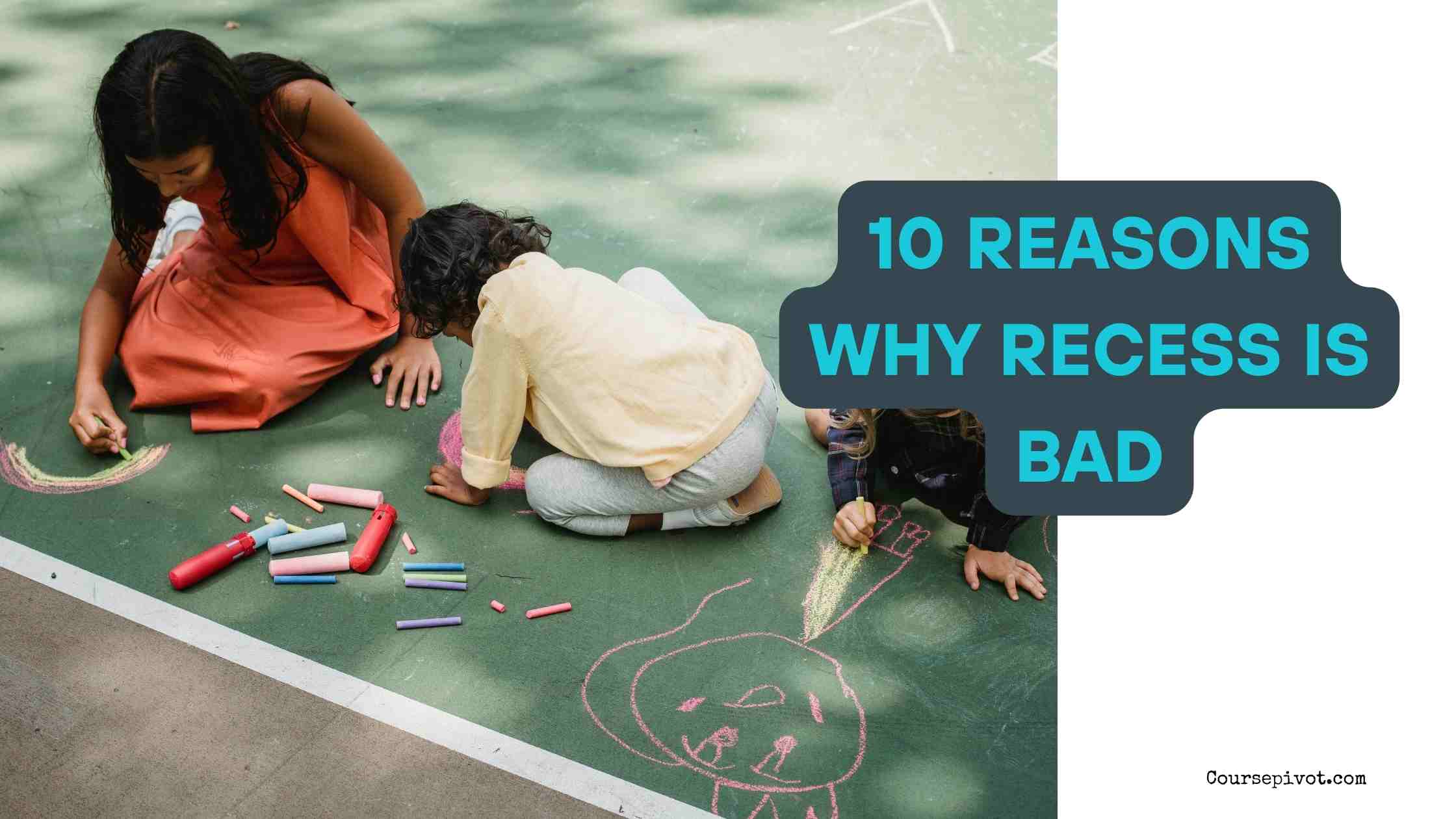
10 Reasons Why Recess Is Bad
Recess is often praised as a much-needed break in the school day—a chance for kids to burn off energy, socialize, and refresh. That’s the side of recess most people focus on. But is it always good?
I used to think recess was a universal benefit, no questions asked. But then I started paying closer attention. I saw kids who dreaded recess, teachers who struggled to keep order afterward, and schools that had to weigh academic time against free play. There’s a side to recess that doesn’t get talked about enough.
You can read our top blogs on 100 reasons why recess should be longer or 20 reasons why recess should not be longer
Not all kids experience recess as joyful or beneficial. And not all schools have the resources or environment to make recess a healthy, safe, or productive part of the day. So it’s important we acknowledge that recess can have its downsides. This isn’t about eliminating breaks altogether—but about recognizing that recess is not a one-size-fits-all solution.
Let’s talk honestly about the other side. Here are 10 reasons why recess is bad—or at the very least, not always as good as it seems.
1️⃣ Increased Bullying and Social Exclusion
Recess often becomes a free-for-all. Without structured adult guidance, bullying can thrive. Kids form cliques, exclude others, or even physically intimidate peers. For many students, especially those who are shy, anxious, or different, recess is the most stressful part of their day.
2️⃣ Lack of Supervision and Safety Risks
Not every school has enough staff to monitor every corner of the playground. That leads to accidents, unsafe play, and unnoticed conflict. I’ve seen kids get injured or pushed around during recess simply because there weren’t enough eyes watching.
3️⃣ Unproductive Use of Time
While recess is meant to be refreshing, many students don’t use it in ways that truly help them reset. Some pace around aimlessly. Others just argue or hover near walls. It’s not always energizing—it can feel empty or wasted, especially for kids who don’t know how to join in.
4️⃣ Makes Classroom Transitions Difficult
Getting a group of kids to refocus after recess is tough. Their energy levels are high, their minds are elsewhere, and valuable learning time is lost trying to calm them down. Teachers often spend 10–15 minutes just managing the transition.
5️⃣ Reinforces Social Hierarchies
Recess can feel like a popularity contest. The athletic kids dominate the games, the confident ones control the conversation, and those who don’t fit in are left standing alone. Instead of being a break, it becomes a reminder of who’s in and who’s out.
6️⃣ Triggers Anxiety in Some Students
Not every child feels safe or confident at recess. Some struggle with social anxiety or sensory sensitivities. The noise, chaos, and pressure to fit in can cause them real emotional distress—something I’ve witnessed firsthand while helping in elementary schools.
7️⃣ Physical Injuries Are Common
With balls flying, kids running in every direction, and sometimes rough play, injuries during recess are not uncommon. Scraped knees, twisted ankles, even broken bones—all things I’ve seen happen during unsupervised or overcrowded playtime.
8️⃣ Undermines Instructional Time
Recess eats into classroom learning. Schools with tight schedules often find themselves sacrificing valuable teaching minutes to accommodate it. That’s a serious concern for students who need more academic support, not less.
9️⃣ Not Inclusive for Students with Disabilities
Playgrounds aren’t always accessible. Students with physical disabilities may find recess isolating or frustrating if they can’t join in on the same level. That creates a divide that recess was never meant to cause.
🔟 Can Reinforce Bad Behavior
Some students carry over their disruptive behavior from the playground into the classroom. Fights, name-calling, or defiance that begin during recess don’t stay outside—they follow students back into learning spaces, disrupting the flow of the day.
Is Recess Really That Great?
It’s easy to romanticize recess. For some kids, it really is the best part of the day. But we need to stop pretending it’s universally positive. The reality is, for many students, recess is stressful, unsafe, or unproductive. And for teachers, it can become just another challenge to manage.
So should we get rid of recess altogether? Not necessarily. But we should absolutely rethink how we structure it, supervise it, and support students during it. Recess isn’t bad in itself—it’s how it plays out in real school environments that makes all the difference.
When poorly managed or taken for granted, recess does more harm than good. That’s why it’s important to ask hard questions, not just about whether recess is fun—but whether it’s fair, safe, and meaningful for every student.
Cite this article
You can copy and paste your preferred citation format below.
Martin, L. & Arquette, E.. (2025, May 14). 10 Reasons Why Recess Is Bad. Coursepivot.com. https://coursepivot.com/blog/10-reasons-why-recess-is-bad/



